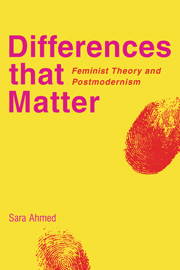7 - Screens
Published online by Cambridge University Press: 22 September 2009
Summary
Is postmodernism on screen? Can postmodernism be screened? Such questions demand their own negation. Postmodernism is not a series of images that may exist on the screen as such (‘look, there's postmodernism!’). Indeed, I would even suggest that there is nothing that is screenable about postmodernism: postmodernism does not have a nature that lends itself to the screen (postmodernism is not a scene that can be transported from one screen to another). Rather, thinking of postmodernism in relation to the screen requires that we analyse what film theory does when it names films as postmodern: what does it look for? How does it see? In other words, my consideration of postmodernism and the screen will not assume that we can find postmodernism on the screen. Rather, it will involve an analysis of films which have been theoretically framed as postmodern, that is, as transgressing the modes of classical cinema through the implosion of the image. In this chapter, I will analyse ‘postmodernism’ as a theoretical frame which looks for signs of transgression in the forms of identification available in classical cinema. I ask: what is at stake for feminism in the seeing of postmodernism on the screen?
Seeing postmodernism
Despite my opening comments, it must be noted that there is comparatively little film theory that operates through designating films as postmodern.
- Type
- Chapter
- Information
- Differences that MatterFeminist Theory and Postmodernism, pp. 166 - 190Publisher: Cambridge University PressPrint publication year: 1998
- 1
- Cited by



